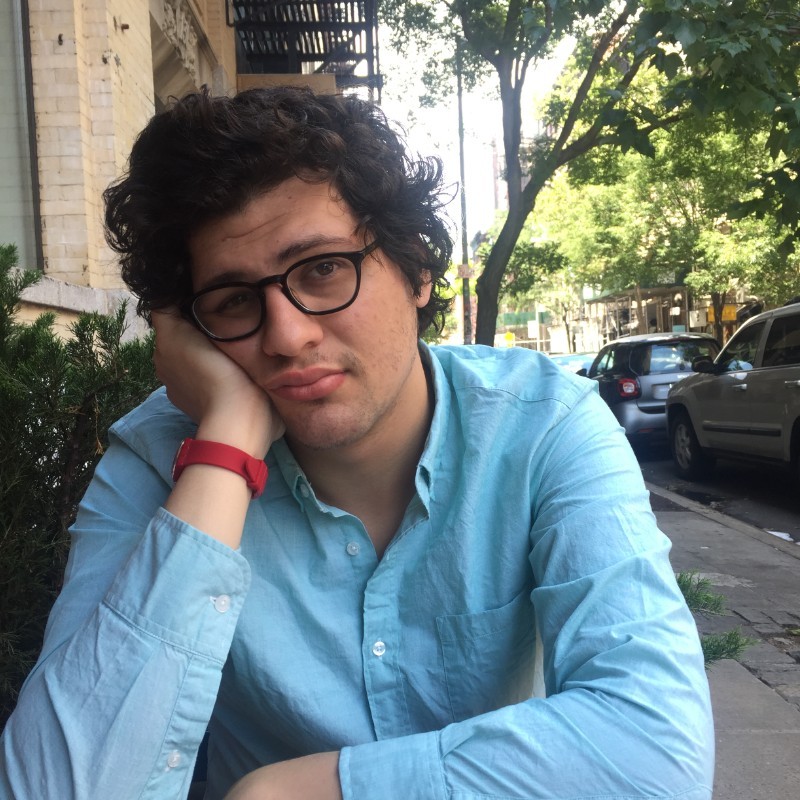It took fifty pounds of dirt for Carlos Jaramillo to build his small monument to the charrería.
The photographer, based now in Los Angeles, has situated the display on the third floor of an anonymous ex-warehouse at the tip of Ridgewood, inside a gallery that’s been a lynchpin for what some say is a thriving local art scene. The pile of dirt on the ground indicates that Tierra Del Sol might be the most ambitious project yet showcased at Selenas Mountain, a gallery that has always proven remarkably capable of doing a lot inside of a small white box at the fraying edges of the gentrifying neighborhood. Standing inside the imported dirt affords a visceral vantage point to view Jaramillo’s impressionistic takes on a cultural tradition that Mexico once named its national sport.
At the center of things is one of Jaramillo’s more recent accomplishments – a massive inkjet print titled “Paso de le Muerta #1.” Surrounded in a frame made of leather, the image is a document of a climatic scene in one of these charrerías, which Jaramillo took at the Pico Rivera Sports Arena in the suburbs of Los Angeles. The outdoor area was explicitly built for the sport in the 1970s and its longstanding popularity testifies to the sport’s cultural capital. In 2000, a Los Angeles Times writer wrote that the arena “is to Mexican regional music what Nashville’s Grand Ole Opry is to country music.” Names familiar to the radio and cultural format perform regularly there like Jenni Rivera and the late Juan Gabriel. (Gabriel, one of the best-selling singers in Mexican history, would go there to squish “through the pungent rodeo mud in his fancy patent leather shoes,” according to this account.)
The subjects of Jaramillo’s photos are not pop stars, however. In “Paso de la Muerte,” they are shadows. The title translates to “pass of death” and little can be discerned under the blurred sombrero in Jaramillo’s photo. This pass involves one of the central riders in these shows – called charros – leaping from one horse to get on top of a second horse; the second generally less tame than the first. Jaramillo reduces this activity to a collage of action, making it not quite clear if the charro is about to get on or get off his horse. Only the horses feel definitively present.



The horses are a recurring subject in the show: one of the smaller photos show one of them wrapped around a frame made out of recycled Modelo cans, which lend the photos more of their collage-like sensibility, bringing Jaramillo’s work in conversation with the LA pop landscapes of contemporary painters like Alfonso Gonzalez Jr., a recurring influence.
The sport “traces its origins to the post-conquest colonization of Mexico when Spain began using New Spain for cattle production and developed the economic infrastructure to sustain this production in the form of a Hacienda system,” reads an essay by Sam Vazquez that accompanies a collection of Jaramillo’s photos, which ties the history of the charrería to the system of plantations adopted by the Spanish colonial authorities at the time. It is, perhaps, easy to go from there and think of the charrería as a literal link that straddles the continental sport of bullfighting with the Texas state sport of the rodeo. But Vazquez reads a complex political history into the particular forms that the charrería takes; “the act of riding,” he notes, could be viewed as a “reappropriation of the charro’s agency and an intentional effort to counteract actual violence.” He completes this observation by detailing the lynching of a Latino rancher in the Los Angeles suburb of La Puente that happened in 1874. “The fact that the form of vigilante white supremacy has never been eradicated suggests that today’s charros and escaramuzas are also responding to the historical effort that attempted to antagonize jinetes of that era,” he writes.
The escaramuzas – the colorfully-clad women who compete in a separate event at charrerías – are painted by Jaramillo in contrast to the barely-seen faces of his charros. (If they appear at all in the show, they are dramatically obscured by clouds of dust.) The women, however, are seen. The most elegant portrait of these shows up in “Rutina de Escaramuzas,” a bouquet-like image whose impact Jaramillo compounds with flowers that appear illustrated in its margins. It’s an image that captures the attention span of the charrería, a constellation of moments that in Jaramillo’s photos feel, at least for a moment, frozen in time.
‘Tierra Del Sol’ will be at Selenas Mountain until July 1. The gallery is located at 63 Woodward Avenue #6321.



Top photo taken by Andrew Karpan for Bushwick Daily.
For more news, sign up for Bushwick Daily’s newsletter.
Join the fight to save local journalism by becoming a paid subscriber.



